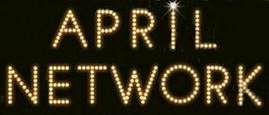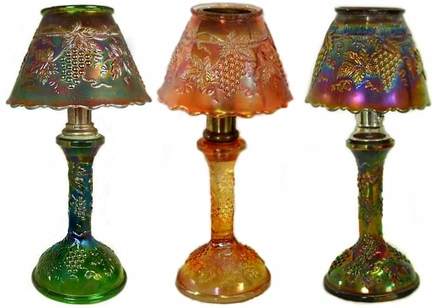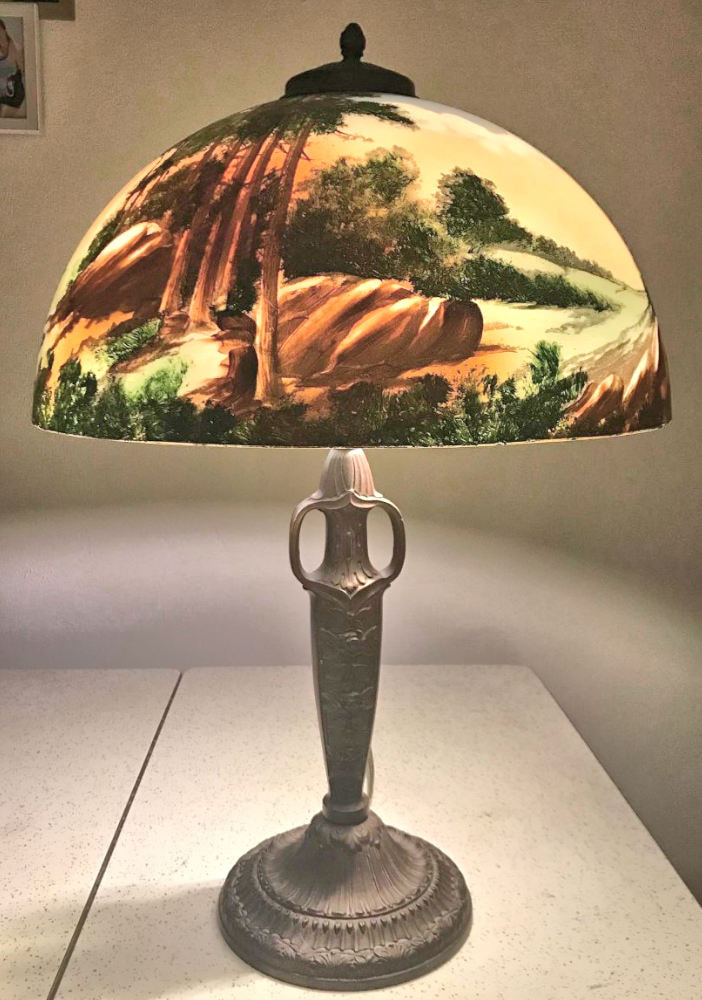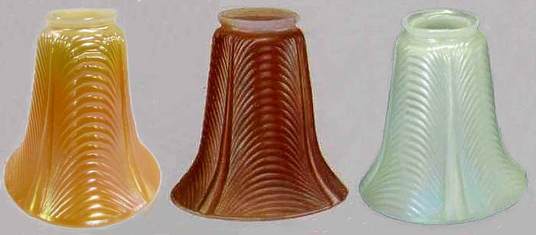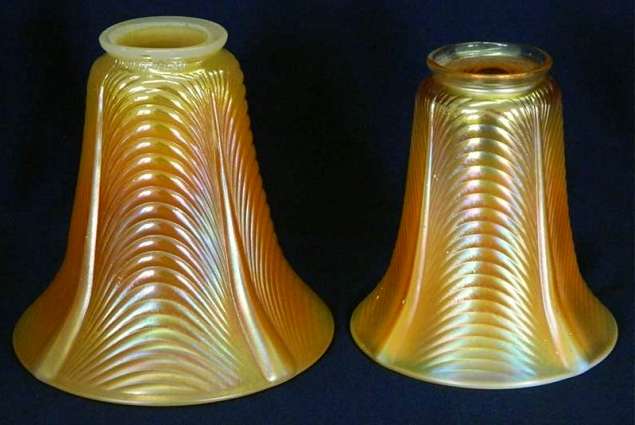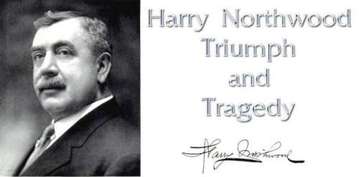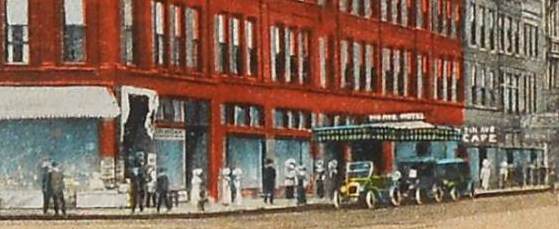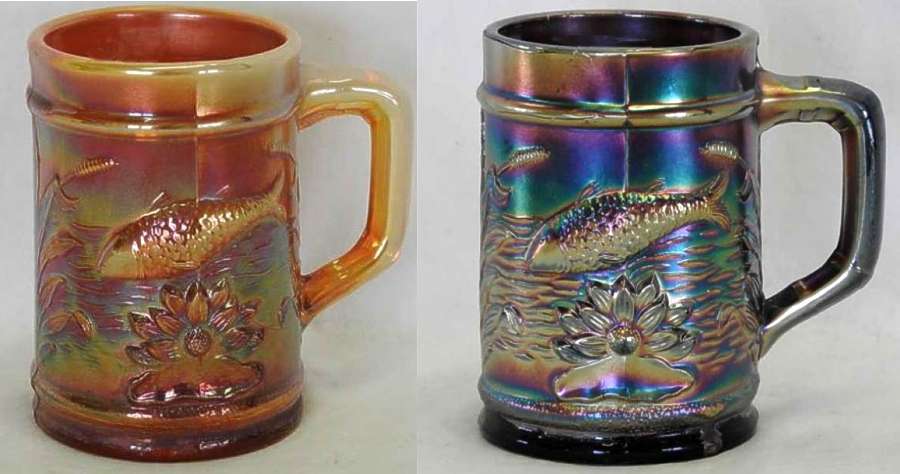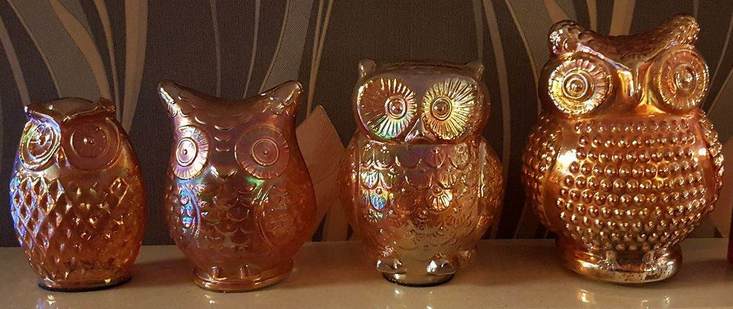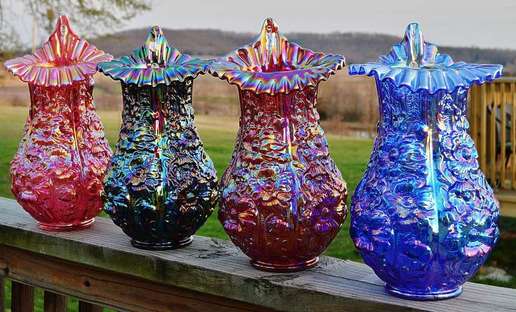NetworK ezine Issue 23. April 2017
Totally Devoted to Carnival Glass
|
Monday 23rd November, 1914 was the start of a new working week. Shackleton's wooden ship, the "Endurance", was pushing its way through the pack ice to Antarctica, and at the same time, Harry Northwood (around 7,000 miles away) was writing a momentous letter to his brother-in-law, Percy Beaumont. Now, thanks to Scott Beale, we can show you that remarkable letter from over a century ago, in its entirety. A casual glance might not immediately reveal its exceptional importance, but this letter is actually of great significance. So what was it all about, and why did it matter? Let’s cast some light on it all. |
Northwood Grape and Cable candle lamps – green, marigold and purple.
Marigold and purple are courtesy Seeck Auctions. |
Carnival Glass in Lights
|
Harry Northwood’s most iconic piece of lighting was surely the Grape and Cable candle lamp, shown above. But this was a throwback to the days of candlelight, and was just one small part of Harry’s full range of lamp shades that utilised the modern and growing use of electricity for lighting. In around 1912, H. Northwood Company launched the Luna Illuminating Glassware range with a stunningly impressive catalogue packed full of scientific charts from the New York Electrical Testing Laboratories alongside beautiful illustrations of Harry’s glass lamp shades. No more smoky candles, kerosene or smelly gas; clean electric lighting was the way forward. Here on the right is an extract of a 1911 Butler Brothers ad - electricity was replacing candle power. |
Northwood had offices all set up for orders in New York, Baltimore, Cincinnati, Chicago, St. Louis and San Francisco. And some stunningly lovely Carnival Glass shades were offered in the Luna range, iridised with both marigold and pastel effects.
|
Northwood’s Pillar and Drape shade (which was originally called Venetian).
Left, with marigold iridescence; centre, the actual Northwood “Luna” catalogue illustration and right, with pastel pearl iridescence. Left and right, courtesy Seeck Auctions. |
Two sizes of Northwood's Pillar and Drape shades on Luna base glass. The larger shade has "NORTHWOOD" moulded under the top rim. Courtesy of Seeck Auctions.
|
|
Surely the future for Northwood was secured … but unfortunately it was not to be. Harry’s Luna glass was, in the words of his catalogue “in every way the most up-to-the-minute lighting glass made”. The only problem was, it wasn’t his invention. Here on the right is an extract from the letter we referred to (written by Harry to Percy Beaumont). |
Just two days after Harry wrote that letter he entered into a legal License agreement with Macbeth-Evans, to continue producing Luna glass. That agreement would ultimately be the cause of massive financial problems for Northwood. Problems which almost certainly played a part in the eventual closure of the factory, and may even have contributed to a double tragedy within the Northwood family.
The full letter and the gripping, heart-breaking story behind it is all in our newly researched feature article: Harry Northwood – Triumph and Tragedy or click on the picture below.
The full letter and the gripping, heart-breaking story behind it is all in our newly researched feature article: Harry Northwood – Triumph and Tragedy or click on the picture below.
Fishy goings-on at the 7th Avenue Hotel
|
The line of automobiles outside the 7th Avenue Hotel, at Liberty and 7th in Pittsburgh, hints at the upmarket clientele. Although it wasn’t the top hotel in the city in 1911 (the twenty-three storey William Penn took that title), it was still up there with the best. And in January, 1911, Walter Minnemeyer representing the Dugan Glass Co., was showing off the company’s glassware in the hotel, as part of the annual Pittsburgh Glass Exposition. Here’s an extract from a report in the 1911 “Pottery and Glass Salesman” describing a new iridescent line in the Dugan display. Can you guess what it was? |
|
Yes, it was Dugan's Fisherman’s Mug. The description is fascinating and very evocative – perhaps the writer was an angler. The detail of the plant life is wonderful – “wild rice” and “pond lilies”. It’s been speculated by various writers that the mug was intended as a container for a grocery product, but this original account of Dugan’s introduction of the new line, does not give credence to that. Quite the opposite, in fact, as there was another separate room where Dugan’s “novelties and souvenirs” were displayed for the commercial buyers – and that’s where you would expect an item aimed at commercial use would be. Note: the Fisherman's mug was used as a club souvenir by the Pacific Northwest Carnival Glass Club (PNWCGC). It has a fish on both sides rather than just one fish on the Dugan original. A new mould was made by Fenton who made the souvenirs, which are marked. There's lots more to see and read about Dugan's Carnival Glass on our website here: Dugan-Diamond Homepage |
Dugan Fisherman’s mug in rare peach opal and in purple.
Courtesy Seeck Auctions. |
What a Hoot!
Several other of these avian cuties were previously reported by Angie Thistlewood and Lynne Martin, but this is the first time that the fabulous large owl (on the far right of the picture) has been reported. And isn’t that one a beauty! Dave says that they were on vacation when they found the large owls, and they really struggled to get them into their suitcase!
Several other of these avian cuties were previously reported by Angie Thistlewood and Lynne Martin, but this is the first time that the fabulous large owl (on the far right of the picture) has been reported. And isn’t that one a beauty! Dave says that they were on vacation when they found the large owls, and they really struggled to get them into their suitcase!
The photo of the four splendid, marigold owls shown above is courtesy of, and with thanks to, Dave and Pam Perks.
Read all about the owls, and the Indian factory where they were made, in our feature article: What a Hoot.
Read all about the owls, and the Indian factory where they were made, in our feature article: What a Hoot.
|
Fenton Art Glass factory to be demolished
With great sadness, we read about the imminent demolition in June, of the former Fenton Art Glass factory in Williamstown. Reported in the “Marietta Times”, it was said that “much of the machinery used in the workshops … will be up for auction” soon. The local press also reported that Fenton had purchased moulds from many other glass companies over the past century, amassing a collection of between 9,000 and 10,000 cast iron moulds. A Fenton spokesman was quoted as saying “We still haven’t decided if those will be placed up for auction yet”. |
We invite you and your friends to join us all on NetworK's fast growing and very active Facebook Group - Carnival Glass NetworK. If you have missed any of the previous issues of NetworK and NetworK Specials, they are on our Back Issues page.
